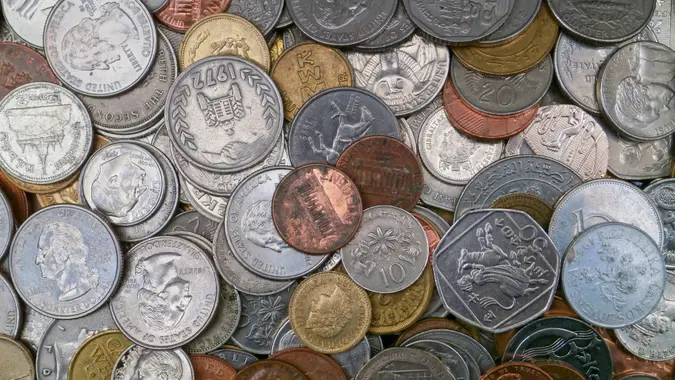What Should Your Post-Pandemic Savings Strategy Be?

Commitment to Our Readers
GOBankingRates' editorial team is committed to bringing you unbiased reviews and information. We use data-driven methodologies to evaluate financial products and services - our reviews and ratings are not influenced by advertisers. You can read more about our editorial guidelines and our products and services review methodology.

20 Years
Helping You Live Richer

Reviewed
by Experts

Trusted by
Millions of Readers
For many Americans, the financial impact of the COVID-19 pandemic ran to two different extremes. Those who couldn’t work because of lockdown-related business closures, or who saw their wages diminish due to reduced hours, might have faced financial devastation in the form of drained bank accounts and mounting debt.
Read More: The Economy and Your Money: All You Need To KnowFind: How To Handle a Surprise Bill When You Don’t Have Enough in Savings
On the other end of the spectrum, those who continued to earn regular paychecks because they could work remotely might have seen their savings fatten because there was nothing much to spend money on during long periods of lockdown.
Now that the U.S. is slowly emerging into a post-COVID economy, many Americans will have to reconsider their savings goals. Your own post-pandemic saving strategy will be largely dependent upon how your finances were affected during the pandemic.
Americans who had to tap into savings accounts should make it a priority to rebuild emergency savings, experts say. As noted in a CNBC article, many financial experts recommend saving three to six months’ worth of living expenses in an emergency fund to cover necessities such as home payments, utility bills, insurance and groceries in the event of a financial crisis.
Follow Along: 31 Days of Living Richer
But in a post-pandemic world, that rule of thumb doesn’t necessarily apply to everyone. People who have been unemployed for long stretches during the pandemic might have to reconsider how much money they should save. If you had to go deep into debt during the pandemic, for example, your first priority should be on repaying the debt.
“The easiest way to earn money is to stop spending money,” David Kilby, president and CEO of financial wellness platform FinFit, wrote in a May 19 column for MarketWatch. “Evaluate your outstanding debt and determine which debt bears the highest interest/cost structure.”
Rather than follow a strict rule of thumb regarding how much to save, people should “actually think of their own specific situation,” Dana Menard, a certified financial planner and founder and CEO of Twin Cities Wealth Strategies, told CNBC. That might be three months’ worth of savings for some people and 12 months for others.
See: Money’s Most Influential: Where Do Americans Get Their Financial Advice?Find: How I’m Sticking to a Budget and Spending Less During COVID-19
Amy Richardson, a certified financial planner with Schwab Intelligent Portfolios Premium, told Money magazine last month that a good first step post-pandemic is ensuring that your overall financial house is in order — not just in terms of rebuilding your emergency fund, but also by maxing out your 401(k) plan and reviewing your own personal short- and long-term goals.
Meanwhile, Kilby offered these tips for saving in a post-pandemic environment:
- Look for high-yield checking and savings accounts: The best places to find higher-than-average annual percentage yields are at small financial institutions and online banks.
- Invest in CDs and Treasuries: You can find certificates of deposit at just about all financial institutions. They offer a safe way to earn higher APY on your money than with regular savings accounts. Treasuries, or U.S. government bills, are another safe way to earn interest in a post-pandemic economy when many people are still wary of taking financial risks.
- Look for tax-free savings accounts: These include retirement savings accounts such as 401(k)s and IRA plans. You can also look into tax-deferred investment accounts that tend to produce much better returns than traditional investments in the after-tax market.
- What Money Topics Do You Want Covered: Ask the Financially Savvy Female
- 5 Things Most Americans Don’t Know About Social Security
- 20 Home Renovations That Will Hurt Your Home’s Value
- What Income Level Is Considered Middle Class in Your State?
Last updated: August 2, 2021
 Written by
Written by  Edited by
Edited by 

























